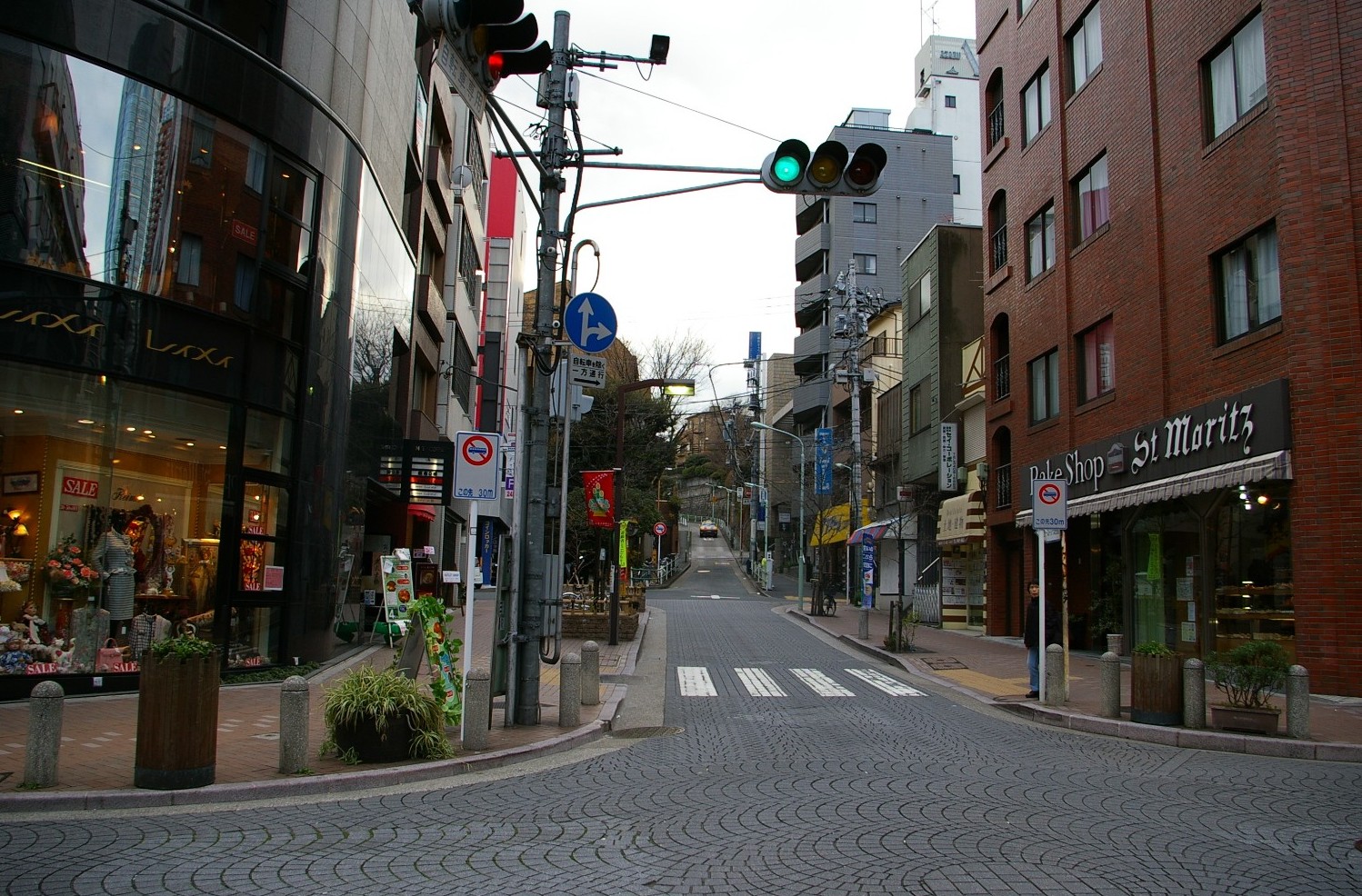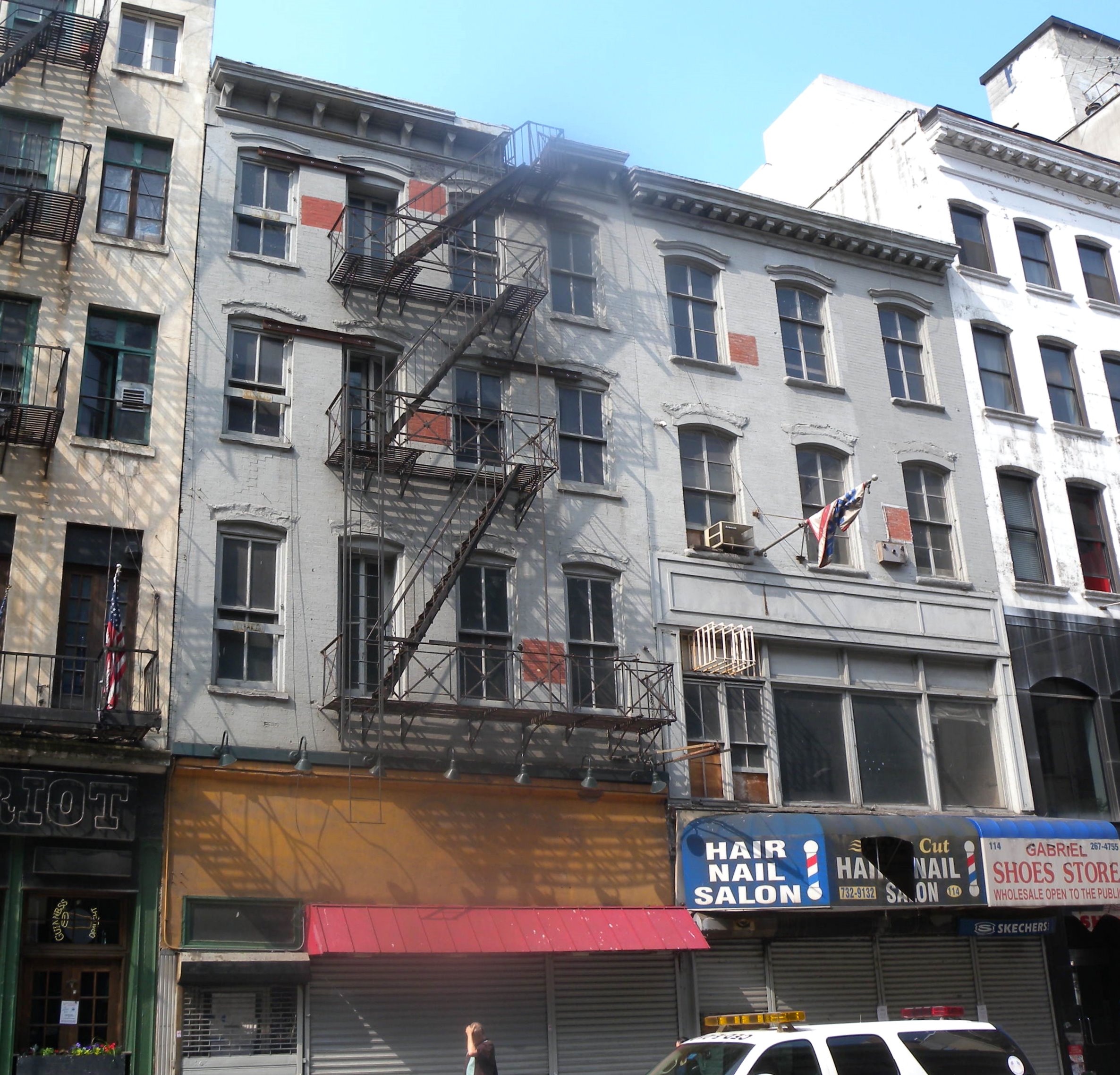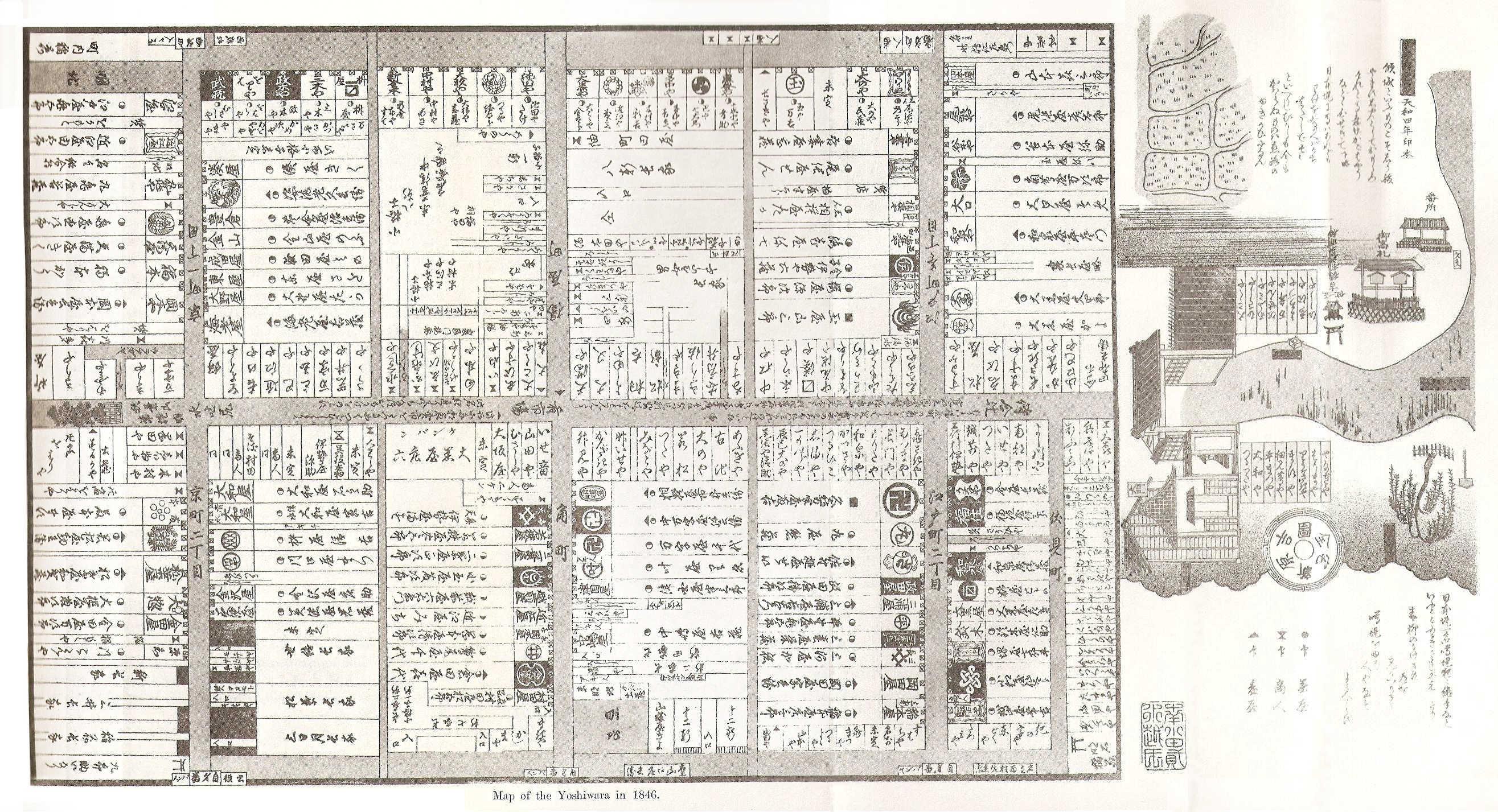|
Azabu, Tokyo
is an area in Minato, Tokyo, Minato,Tokyo, Japan. Built on a marshy area of foothills south of central Tokyo, its coverage roughly corresponds to that of the former Azabu Ward, presently consisting of nine official districts: Azabu-Jūban, Azabudai, Azabu-Nagasakachō, Azabu-Mamianachō, Nishi-Azabu, Higashi-Azabu, Moto-Azabu and Roppongi. It is known as one of Tokyo's most expensive and upscale residential districts with many artists, business people, and celebrities residing there. It is also known for its large Demography of Japan#Foreign residents, foreign population, due in part to a number of foreign embassy, embassies present in the area. History The name Azabu literally means hemp cloth. Until the early Edo period, the area was agricultural. Archaeological evidence indicates that the area was inhabited as far back as the Jōmon period. The Juban Inari shrine (formerly known as Takechiyo Inari) was constructed in AD 712, the temple of Zenpuku-ji in 824, and the Hikawa Sh ... [...More Info...] [...Related Items...] OR: [Wikipedia] [Google] [Baidu] |
Zenpuku-ji
Zenpuku-ji (善福寺), also known as Azabu-san (麻布山), is a Jōdo Shinshū temple located in the Azabu district of Tokyo, Japan. It is one of the oldest Tokyo temples, after Asakusa. History Founded by Kūkai in 824, Zenpuku-ji was originally a Shingon temple. Shinran visited the temple during the Kamakura period and brought the temple into the Jodo Shinshu sect. Under the 1859 Treaty of Amity and Commerce, the first Tokyo legation of the United States of America was established at Zenpuku-ji under Consul-General Townsend Harris. Features * There is a monument to Townsend Harris and the First American Legation in Tokyo. * A 750-year-old ginkgo tree at the entry to the cemetery, purportedly planted by Shinran and called "the upside down tree" (the largest ginkgo in Tokyo today), is a registered National Natural Monument * A well in the approach to the shrine is supposed to have been struck by Kukai's bishop's staff. This well served the community during the Great K ... [...More Info...] [...Related Items...] OR: [Wikipedia] [Google] [Baidu] |
Naoko Takeuchi
is a Japanese manga artist. She is best known as the author of ''Sailor Moon'', one of the most popular manga series of all time. She has won several awards, including the 1993 Kodansha Manga Award for ''Sailor Moon''. Takeuchi is married to Yoshihiro Togashi, the author of ''YuYu Hakusho'' and ''Hunter × Hunter''. Early life Takeuchi was born in Kofu, Yamanashi, Japan, to parents Kenji and Ikuko Takeuchi. She has a younger brother, Shingo. She gave the names of her relatives to the characters she created for ''Sailor Moon'', and mentions this in interviews and in several comic strips she produced, in place of author notes. Takeuchi attended Kofu Ichi High School. She wore a seifuku and joined the astronomy and manga clubs. These experiences influenced her work for ''Sailor Moon'', in addition to her other pieces, such as ''Love Call'' and ''Rain Kiss''. Her formative high school experiences influenced her trajectory to become a manga artist. Takeuchi's father encouraged ... [...More Info...] [...Related Items...] OR: [Wikipedia] [Google] [Baidu] |
Manga
Manga (Japanese: 漫画 ) are comics or graphic novels originating from Japan. Most manga conform to a style developed in Japan in the late 19th century, and the form has a long prehistory in earlier Japanese art. The term ''manga'' is used in Japan to refer to both comics and cartooning. Outside of Japan, the word is typically used to refer to comics originally published in the country. In Japan, people of all ages and walks of life read manga. The medium includes works in a broad range of genres: action, adventure, business and commerce, comedy, detective, drama, historical, horror, mystery, romance, science fiction and fantasy, erotica ('' hentai'' and ''ecchi''), sports and games, and suspense, among others. Many manga are translated into other languages. Since the 1950s, manga has become an increasingly major part of the Japanese publishing industry. By 1995, the manga market in Japan was valued at (), with annual sales of 1.9billion manga books and manga magazi ... [...More Info...] [...Related Items...] OR: [Wikipedia] [Google] [Baidu] |
Yoko Ono
Yoko Ono ( ; ja, 小野 洋子, Ono Yōko, usually spelled in katakana ; born February 18, 1933) is a Japanese multimedia artist, singer, songwriter, and peace activist. Her work also encompasses performance art and filmmaking. Ono grew up in Tokyo and moved to New York City in 1953 with her family. She became involved with New York City's downtown artists scene in the early 1960s, which included the Fluxus group, and became well known in 1969 when she married English musician John Lennon of the Beatles. The couple used their honeymoon as a stage for public protests against the Vietnam War. She and Lennon remained married until he was murdered in front of the couple's apartment building, the Dakota, on 8 December 1980. Together they had one son, Sean, who later also became a musician. Ono began a career in popular music in 1969, forming the Plastic Ono Band with Lennon and producing a number of avant-garde music albums in the 1970s. She achieved commercial and critical acc ... [...More Info...] [...Related Items...] OR: [Wikipedia] [Google] [Baidu] |
Kazoku
The was the hereditary peerage of the Empire of Japan, which existed between 1869 and 1947. They succeeded the feudal lords () and court nobles (), but were abolished with the 1947 constitution. Kazoku ( 華族) should not be confused with ''"kazoku ( 家族)"'', which is pronounced the same in Japanese, but with a different character reading that means "immediate family" (as in the film ''Kazoku'' above). Origins Following the Meiji Restoration of 1868, the ancient court nobility of Kyoto, the , regained some of its lost status. Several members of the , such as Iwakura Tomomi and Nakayama Tadayasu, played a crucial role in the overthrow of the Tokugawa shogunate, and the early Meiji government nominated to head all seven of the newly established administrative departments. The Meiji oligarchs, as part of their Westernizing reforms, merged the with the former into an expanded aristocratic class on 25 July 1869, to recognize that the and former were a social class d ... [...More Info...] [...Related Items...] OR: [Wikipedia] [Google] [Baidu] |
Pacific War
The Pacific War, sometimes called the Asia–Pacific War, was the theater of World War II that was fought in Asia, the Pacific Ocean, the Indian Ocean, and Oceania. It was geographically the largest theater of the war, including the vast Pacific Ocean theater, the South West Pacific theater, the Second Sino-Japanese War, and the Soviet–Japanese War. The Second Sino-Japanese War between the Empire of Japan and the Republic of China had been in progress since 7 July 1937, with hostilities dating back as far as 19 September 1931 with the Japanese invasion of Manchuria. However, it is more widely accepted that the Pacific War itself began on 7 December (8 December Japanese time) 1941, when the Japanese simultaneously invaded Thailand, attacked the British colonies of Malaya, Singapore, and Hong Kong as well as the United States military and naval bases in Hawaii, Wake Island, Guam, and the Philippines. The Pacific War saw the Allies pitted against Japan, the latter ai ... [...More Info...] [...Related Items...] OR: [Wikipedia] [Google] [Baidu] |
Firebombing Of Tokyo
The was a series of firebombing air raids by the United States Army Air Force during the Pacific campaigns of World War II. Operation Meetinghouse, which was conducted on the night of 9–10 March 1945, is the single most destructive bombing raid in human history. of central Tokyo were destroyed, leaving an estimated 100,000 civilians dead and over one million homeless. In comparison, the atomic bombing of Nagasaki resulted in the immediate death of between 39,000 and 80,000 people. The US first mounted a seaborne, small-scale air raid on Tokyo (the "Doolittle Raid") in April 1942. Strategic bombing and urban area bombing began in 1944 after the long-range B-29 Superfortress bomber entered service, first deployed from China and thereafter the Mariana Islands. B-29 raids from those islands began on 17 November 1944, and lasted until 15 August 1945, the day of Japanese surrender. Over 50% of Tokyo's industry was spread out among residential and commercial neighborhoods; fir ... [...More Info...] [...Related Items...] OR: [Wikipedia] [Google] [Baidu] |
Prostitution In Japan
Prostitution in Japan has existed throughout the country's history. While the Prostitution Prevention Law of 1956 states that "No person may either do prostitution or become the customer of it", loopholes, liberal interpretations and a loose enforcement of the law have allowed the Japanese sex industry to prosper and earn an estimated 2.3 trillion yen ($24 billion) per year. Sex trade and sex services may be referred to as , which also means "manners", "customs" or "public morals". Since Japanese law defines prostitution as "intercourse with an unspecified person in exchange for payment", most services offer specifically non-coital services, such as conversation, dancing or bathing, sometimes accompanied by sexual acts that legally are not defined as "intercourse", in order to remain legal. History From the 15th century, Chinese, Koreans, and other East Asian visitors frequented brothels in Japan. This practice later continued among visitors from "the Western regions", ... [...More Info...] [...Related Items...] OR: [Wikipedia] [Google] [Baidu] |
Meiji Era
The is an era of Japanese history that extended from October 23, 1868 to July 30, 1912. The Meiji era was the first half of the Empire of Japan, when the Japanese people moved from being an isolated feudal society at risk of colonization by Western powers to the new paradigm of a modern, industrialized nation state and emergent great power, influenced by Western scientific, technological, philosophical, political, legal, and aesthetic ideas. As a result of such wholesale adoption of radically different ideas, the changes to Japan were profound, and affected its social structure, internal politics, economy, military, and foreign relations. The period corresponded to the reign of Emperor Meiji. It was preceded by the Keiō era and was succeeded by the Taishō era, upon the accession of Emperor Taishō. The rapid modernization during the Meiji era was not without its opponents, as the rapid changes to society caused many disaffected traditionalists from the former samurai cl ... [...More Info...] [...Related Items...] OR: [Wikipedia] [Google] [Baidu] |
United States
The United States of America (U.S.A. or USA), commonly known as the United States (U.S. or US) or America, is a country primarily located in North America. It consists of 50 states, a federal district, five major unincorporated territories, nine Minor Outlying Islands, and 326 Indian reservations. The United States is also in free association with three Pacific Island sovereign states: the Federated States of Micronesia, the Marshall Islands, and the Republic of Palau. It is the world's third-largest country by both land and total area. It shares land borders with Canada to its north and with Mexico to its south and has maritime borders with the Bahamas, Cuba, Russia, and other nations. With a population of over 333 million, it is the most populous country in the Americas and the third most populous in the world. The national capital of the United States is Washington, D.C. and its most populous city and principal financial center is New York City. Paleo-Americ ... [...More Info...] [...Related Items...] OR: [Wikipedia] [Google] [Baidu] |







